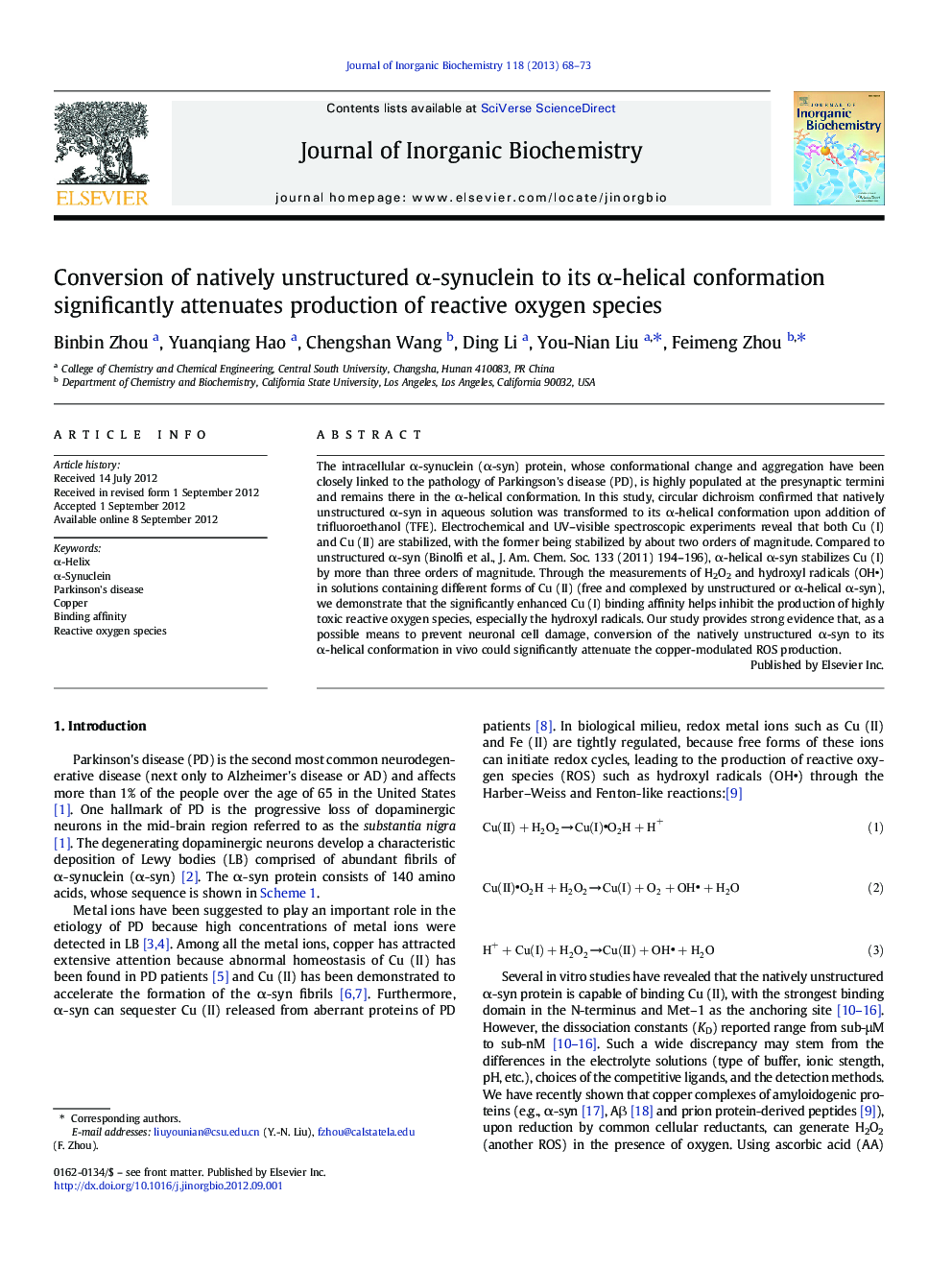| Article ID | Journal | Published Year | Pages | File Type |
|---|---|---|---|---|
| 1315905 | Journal of Inorganic Biochemistry | 2013 | 6 Pages |
The intracellular α-synuclein (α-syn) protein, whose conformational change and aggregation have been closely linked to the pathology of Parkingson's disease (PD), is highly populated at the presynaptic termini and remains there in the α-helical conformation. In this study, circular dichroism confirmed that natively unstructured α-syn in aqueous solution was transformed to its α-helical conformation upon addition of trifluoroethanol (TFE). Electrochemical and UV–visible spectroscopic experiments reveal that both Cu (I) and Cu (II) are stabilized, with the former being stabilized by about two orders of magnitude. Compared to unstructured α-syn (Binolfi et al., J. Am. Chem. Soc. 133 (2011) 194–196), α-helical α-syn stabilizes Cu (I) by more than three orders of magnitude. Through the measurements of H2O2 and hydroxyl radicals (OH) in solutions containing different forms of Cu (II) (free and complexed by unstructured or α-helical α-syn), we demonstrate that the significantly enhanced Cu (I) binding affinity helps inhibit the production of highly toxic reactive oxygen species, especially the hydroxyl radicals. Our study provides strong evidence that, as a possible means to prevent neuronal cell damage, conversion of the natively unstructured α-syn to its α-helical conformation in vivo could significantly attenuate the copper-modulated ROS production.
Graphical abstractα-Helical α-synuclein significantly stabilizes Cu (I), attenuating the production of reactive oxygen species.Figure optionsDownload full-size imageDownload as PowerPoint slideHighlights► Both Cu (I) and Cu (II) are strongly coordinated by α-helical α-syn. ► α-Helical α-syn stabilizes Cu (I) 104 time more than unstructured α-syn does. ► Stabilization of Cu (I) by α-helical α-syn leads to a controlled production of H2O2. ► OH production via copper redox cycling is attenuated by Cu (I) coordination with α-syn.
